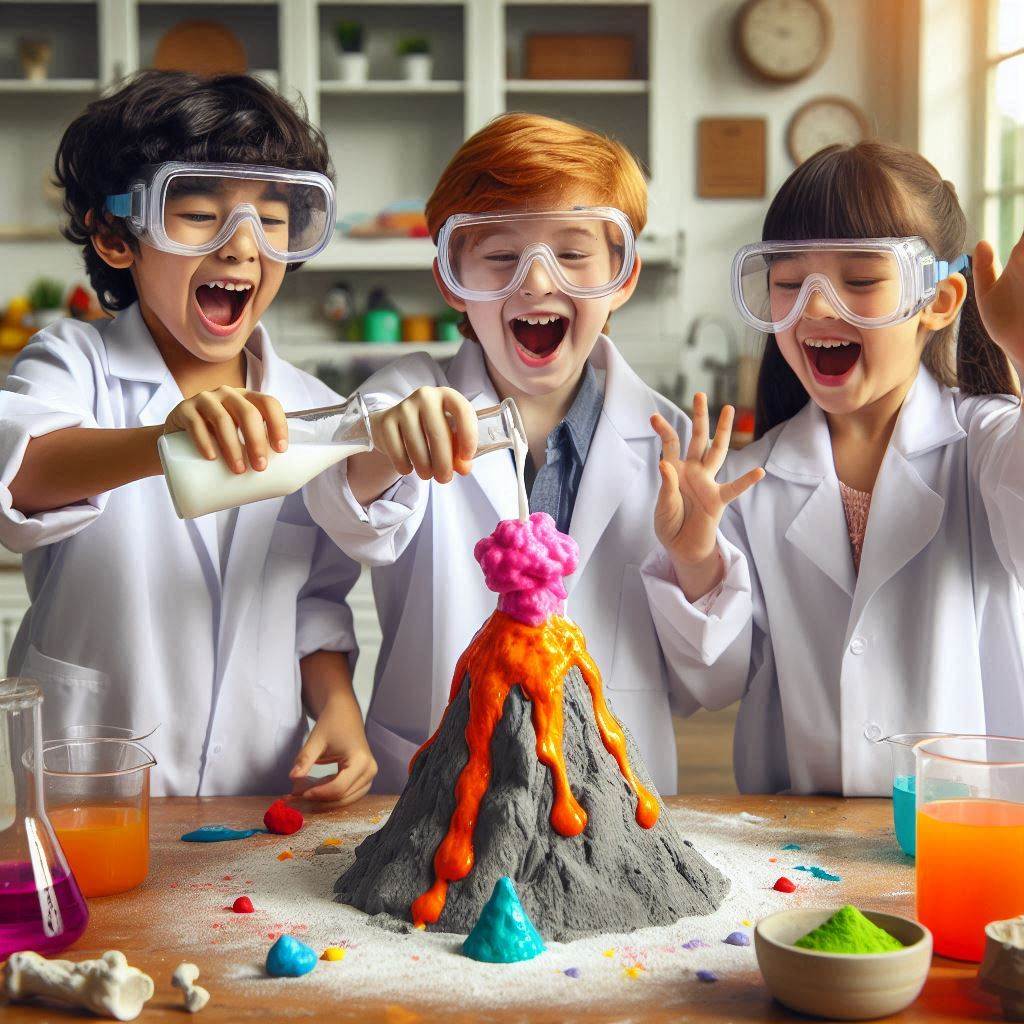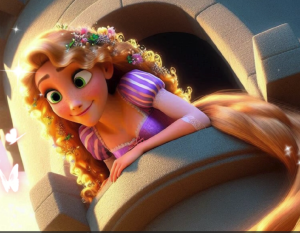5 Fun Science Experiments You Can Do at Home
Get ready to turn your home into a mini-lab! Here are five simple and exciting science experiments that you can do with everyday materials. Each one is designed to spark curiosity, introduce basic scientific concepts, and bring out the joy of hands-on learning. Perfect for young scientists and curious minds of all ages!
1. Baking Soda Volcano
What You’ll Need:
- Baking soda
- Vinegar
- Dish soap (optional)
- Food coloring (for fun)
- A small plastic cup or bottle
Why Kids Love It: The classic baking soda volcano is a hit because of the dramatic “eruption” it creates. Kids love the excitement of watching it bubble over, and it’s a perfect intro to chemical reactions.
How to Do It:
- Place the small cup on a tray or in a dish to contain the mess.
- Add a few tablespoons of baking soda to the cup.
- Mix in a drop or two of dish soap and food coloring for a colorful effect.
- Pour vinegar into the cup, and watch as the volcano “erupts” in a fizzy display of bubbles.
Science Behind It: The reaction between baking soda (a base) and vinegar (an acid) produces carbon dioxide gas, creating the fizzing and bubbling effect.
2. DIY Lava Lamp
What You’ll Need:
- A clear bottle or jar
- Water
- Vegetable oil
- Food coloring
- Alka-Seltzer tablets
Why Kids Love It: This experiment creates a mesmerizing lava lamp effect as blobs of colored water float and sink in the oil, like real lava.
How to Do It:
- Fill a bottle or jar about 3/4 full with oil.
- Add water until the bottle is almost full (water will sink below the oil).
- Add a few drops of food coloring to the water.
- Break an Alka-Seltzer tablet into pieces and drop them into the bottle one at a time.
Science Behind It: Water and oil don’t mix because they have different densities. When you add Alka-Seltzer, it reacts with the water, creating bubbles of carbon dioxide that push the colored water up through the oil, creating the lava effect.
3. Magic Milk Experiment
What You’ll Need:
- Milk (whole milk works best)
- Food coloring
- Dish soap
- Cotton swab
Why Kids Love It: This experiment is like a colorful art show in a bowl of milk! It’s simple but produces surprising and beautiful results that kids enjoy watching.
How to Do It:
- Pour a layer of milk into a shallow dish.
- Add a few drops of different food colorings around the milk.
- Dip a cotton swab in dish soap and touch it to the milk’s surface.
Science Behind It: The soap reduces the surface tension of the milk, causing the fat molecules to move around, which makes the colors swirl in a fascinating display.
4. Balloon Rocket
What You’ll Need:
- A balloon
- String
- Tape
- A straw
Why Kids Love It: This experiment turns a balloon into a rocket! It’s an active and hands-on way to learn about propulsion and Newton’s third law of motion.
How to Do It:
- Thread the string through the straw and secure each end of the string to two objects to create a “zipline.”
- Blow up the balloon without tying it and tape it to the straw.
- Let go of the balloon and watch it zoom along the string.
Science Behind It: As the air escapes from the balloon, it propels it forward along the string, demonstrating Newton’s law that for every action, there’s an equal and opposite reaction.
5. Rainbow in a Jar
What You’ll Need:
- A clear jar or glass
- Honey, dish soap, water, rubbing alcohol, and vegetable oil (each colored with food dye)
Why Kids Love It: Creating a layered rainbow in a jar is like magic for kids! It teaches them about density in a fun, visual way.
How to Do It:
- Pour honey (colored with a drop of food dye) into the jar as the base layer.
- Carefully add layers of dish soap, water, and rubbing alcohol, coloring each layer with different colors.
- Pour each layer slowly down the side of the jar to keep the layers separate.
Science Behind It: Each liquid has a different density, so they don’t mix and instead form colorful layers, creating a rainbow effect.
Final Thoughts
These simple experiments are more than just fun—they provide foundational knowledge in chemistry, physics, and other sciences. They’re easy to set up, require minimal supervision, and offer an engaging way for kids to explore science concepts right from the comfort of home!



